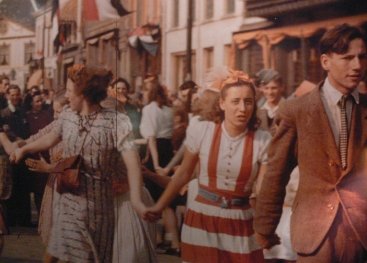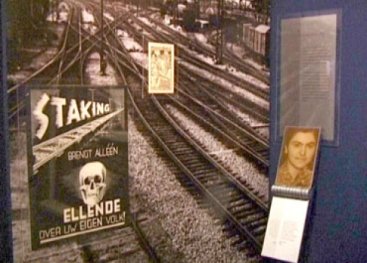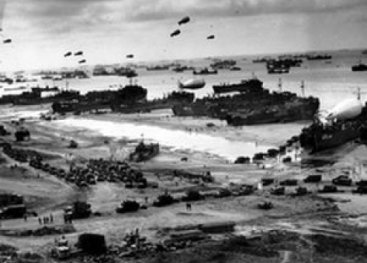
The Netherlands liberated!

May 5th German surrender
From March 1945 onwards, Allied troops began capturing those parts of the Netherlands still under occupation, with heavy fighting and much damage inflicted.
It would take until May 5th for the German troops to surrender. Chaotic days followed in which people were still being killed. At the same time, the recovered freedom was celebrated with exuberant festivities that went on throughout the Summer.


Collaborators put in prison
Approximately 120,000 Dutch collaborators were put in prison. Their trials continued for several years. In the end, 34 Dutch people were executed, including NSB leader Mussert. Shortly after the liberation there were instances of revenge taken on Dutch people who had presumably collaborated with the Germans. Young women who were thought to have had relationships with Germans — 'kraut girls' — had their heads shaved, and members of the NSB were paraded around as traitors.
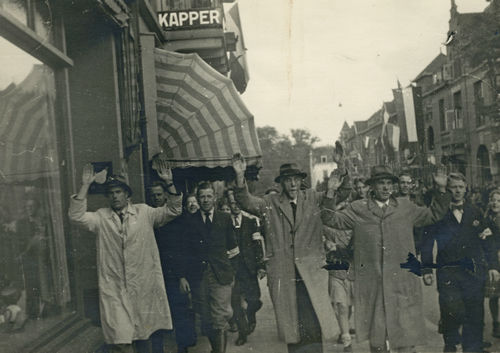
Dutch East Indies
Thousands of Dutchmen signed up to fight against Japan in the Netherlands East Indies. The Second World War was only over when Japan capitulated in August.
Returning to the Netherlands
Hundreds of thousands of political prisoners, victims of persecution and of forced labour returned to the Netherlands. There were very few repatriation facilities set up to receive them and there was very little understanding for the traumatic experiences of Jewish survivors. Many members of the resistance became disappointed with post war politics.
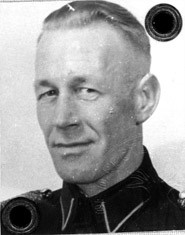 Jan Brasser, an armed squad leader from Krommenie says:
Jan Brasser, an armed squad leader from Krommenie says:
'It was a time of enormous tension and emotion. You never got any rest — real rest, I mean. Always on the go, always on your guard... The emotions that you had to deal with if your comrades were arrested [...]. You couldn't reflect on that very long. There just wasn't time for that [...]. 'I didn't join in the liberation festivities. I was done in... completely worn out, mentally exhausted. I didn't want to go out in the street with all those singing and dancing people. I just couldn't bear it.'
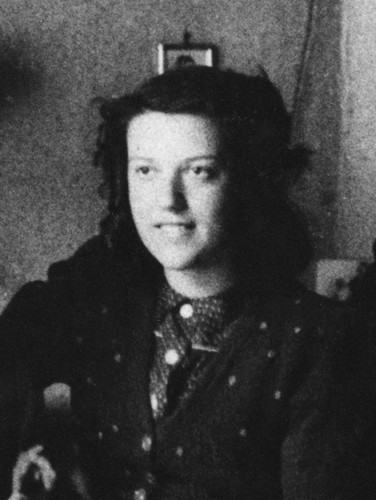 Dina Davidson, a Jewish woman who returned from hiding:
Dina Davidson, a Jewish woman who returned from hiding:
'There was no one to meet us when we returned. We couldn't move back into our house until six months after the liberation. People shrugged their shoulders in response to our story. Then they would tell us of their own hardships: everything had been rationed, their bicycles stolen...'
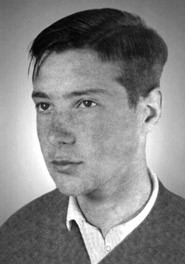 Dik Nannes, returned from forced labour in Germany:
Dik Nannes, returned from forced labour in Germany:
'I had wanted to go into hiding, but that cost money which I just didn't have. When I came back I was in rags. There was no kind of shelter. I had expected something from the Reformed church, of which I was a member, but they didn't do anything. You felt like a second-class citizen, also because of things they said to you on the street like "why didn't you go into hiding?" and “haven't they arrested you yet?"'
Reconstruction
Interest in the war dwindled as the forties drew to a close and the ravaged Netherlands concentrated on reconstruction of the devastated country.
Several hundred thousand homes had been destroyed by wartime hostilities. Materials for reconstruction were in short supply. Destroyed bridges and the lack of transportation made it difficult to bring materials in. Severe shortages remained during those post-war years.
Colander and bedpan
Colander and bedpan made from German helmets. After their surrender, German soldiers were forced to hand over their helmets. They were recycled in factories and everyday items made from those helmets were on sale at the HEMA department stores.

